11585606910
Roche
DIG-High Prime
sufficient for 40 labeling reactions, pkg of 160 μL, solution
Synonyme(s) :
DIG system
Sélectionner une taille de conditionnement
Sélectionner une taille de conditionnement
About This Item
Produits recommandés
Forme
solution
Niveau de qualité
Utilisation
sufficient for 40 labeling reactions
Conditionnement
pkg of 160 μL
Fabricant/nom de marque
Roche
Caractéristiques du produit alternatif plus écologique
Designing Safer Chemicals
Learn more about the Principles of Green Chemistry.
sustainability
Greener Alternative Product
Autre catégorie plus écologique
Température de stockage
−20°C
Description générale
Spécificité
Application
- in Southern blots
- in northern blots
- in dot/slot blots
- for screening of gene libraries
- in In situ hybridizations
Caractéristiques et avantages
- DNA amounts ranging from 10ng to 3μg in a standard reaction.
- DNA of different lengths ranging from small restriction fragments to λ or cosmid DNA.
- DNA, supercoiled or linearized.
- DNA in low melting-point agarose.
Labeling efficiency:
A standard labeling reaction with 1μg template yields 0.8μg newly synthesized digoxigenin-labeled DNA after 1 hour, and 2μg after a 20-hour incubation at +37°C.
Contents
5x concentrated random primer mix: 1U/ μl Klenow polymerase, labeling grade, 1mM dATP, 1mM dCTP, 1mM dGTP, 0.65mM dTTP, 0.35mM DIG-11-dUTP, alkali labile in 50% (v/v) glycerol.
Qualité
In a standard assay with 1μg linearized pBR 328, 0.8μg of DIG-labeled DNA is synthesized after 1 hour, and 2.3μg after 20 hours. When this labeled DNA is used for hybridization at a concentration of 20ng/ml, 0.03pg homologous DNA are detected by chemiluminescence with the anti-DIG-alkaline phosphatase conjugate and CSPD on a dot or Southern blot.
Principe
Notes préparatoires
Assay Time: 80 minutes
Sample Materials
- DNA fragments of at least 100bp
- Linearized plasmid, cosmid or λDNA
- Supercoiled DNA
- Or minimal amounts of DNA (10ng), e.g., DNA restriction fragments isolated from gels or in molten agarose
Note: To obtain optimal results, template DNA should be linearized and should have a size of = 100bp or larger. Template DNA > 5kb should be restriction-digested using a 4bp cutter prior to labeling.
Autres remarques
Code de la classe de stockage
12 - Non Combustible Liquids
Classe de danger pour l'eau (WGK)
WGK 1
Point d'éclair (°F)
No data available
Point d'éclair (°C)
No data available
Faites votre choix parmi les versions les plus récentes :
Déjà en possession de ce produit ?
Retrouvez la documentation relative aux produits que vous avez récemment achetés dans la Bibliothèque de documents.
Les clients ont également consulté
Articles
Digoxigenin (DIG) labeling methods and kits for DNA and RNA DIG probes, random primed DNA labeling, nick translation labeling, 5’ and 3’ oligonucleotide end-labeling.
Notre équipe de scientifiques dispose d'une expérience dans tous les secteurs de la recherche, notamment en sciences de la vie, science des matériaux, synthèse chimique, chromatographie, analyse et dans de nombreux autres domaines..
Contacter notre Service technique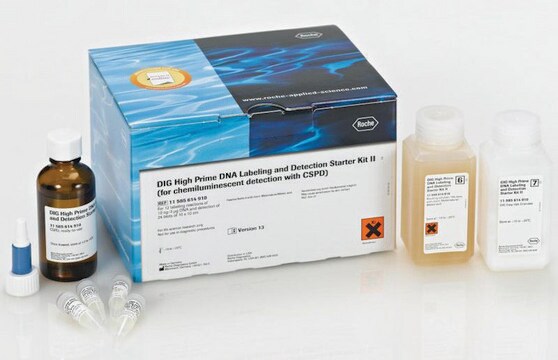
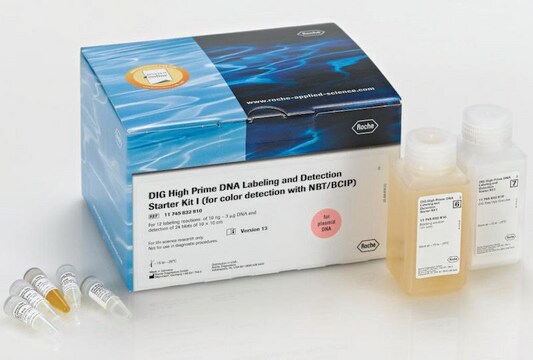

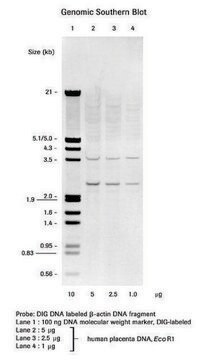
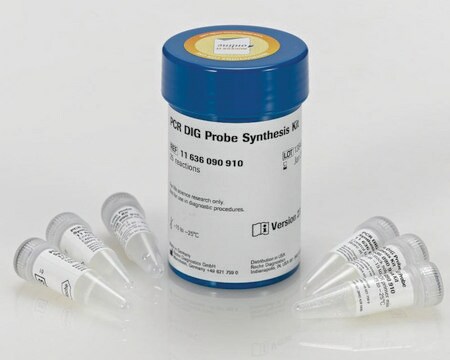
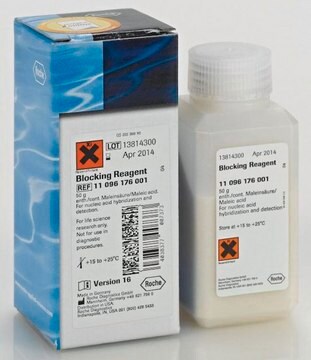
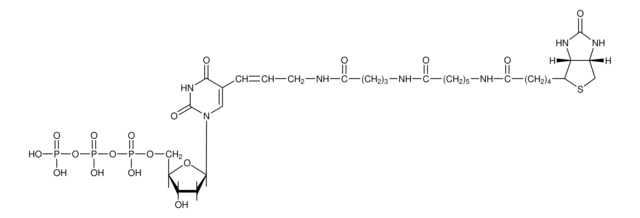
![CSPD ready-to-use Disodium 3-(4-methoxyspiro {1,2-dioxetane-3,2′-(5′-chloro)tricyclo [3.3.1.13,7]decan}-4-yl)phenyl phosphate](/deepweb/assets/sigmaaldrich/product/images/352/091/ef743cea-ccd8-44f1-8f3b-dec5a1e4f5d1/640/ef743cea-ccd8-44f1-8f3b-dec5a1e4f5d1.jpg)
